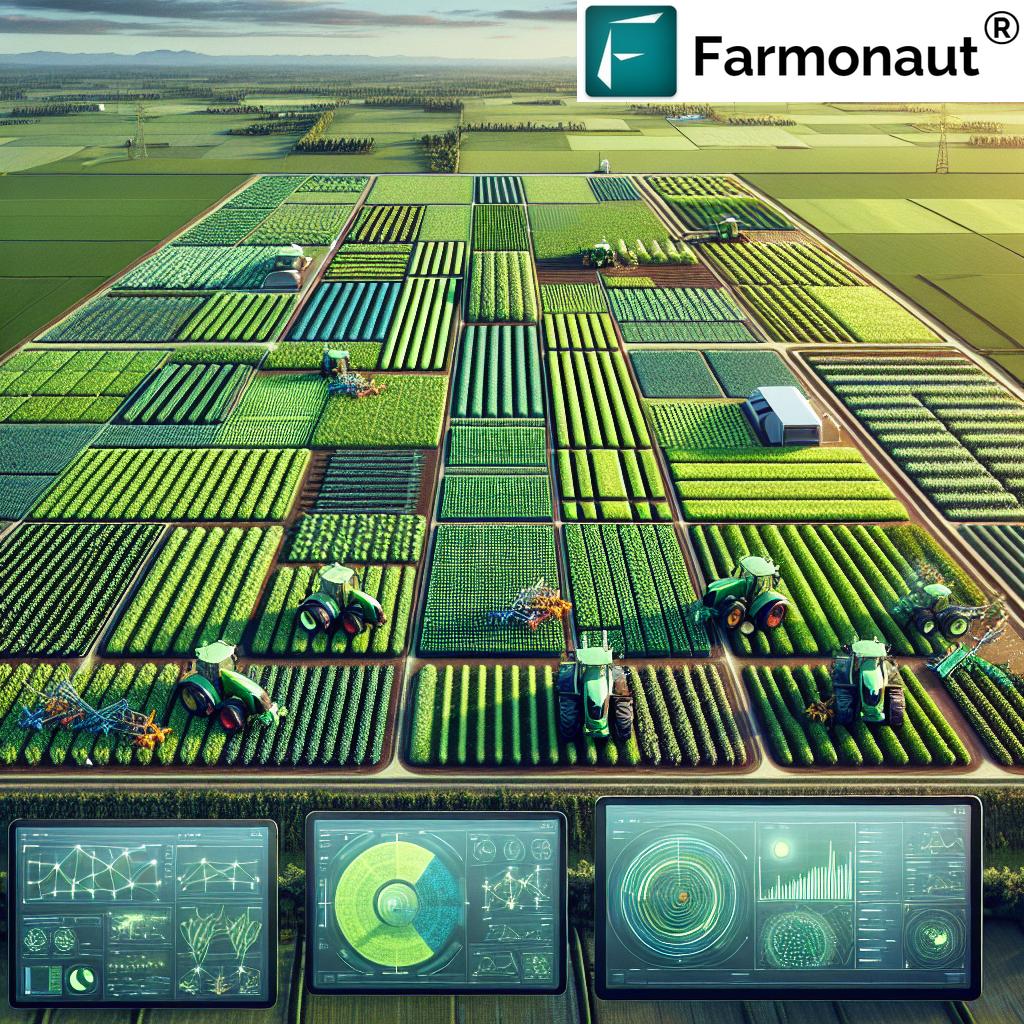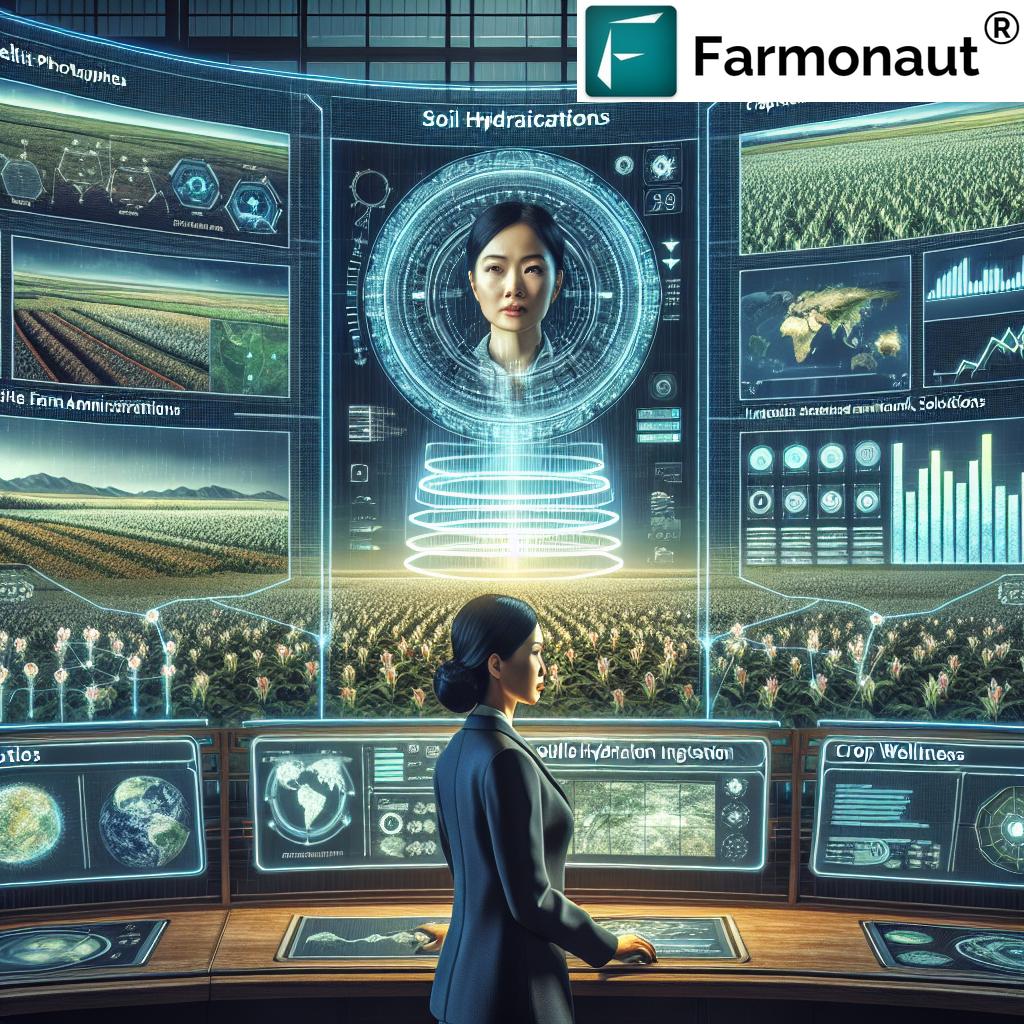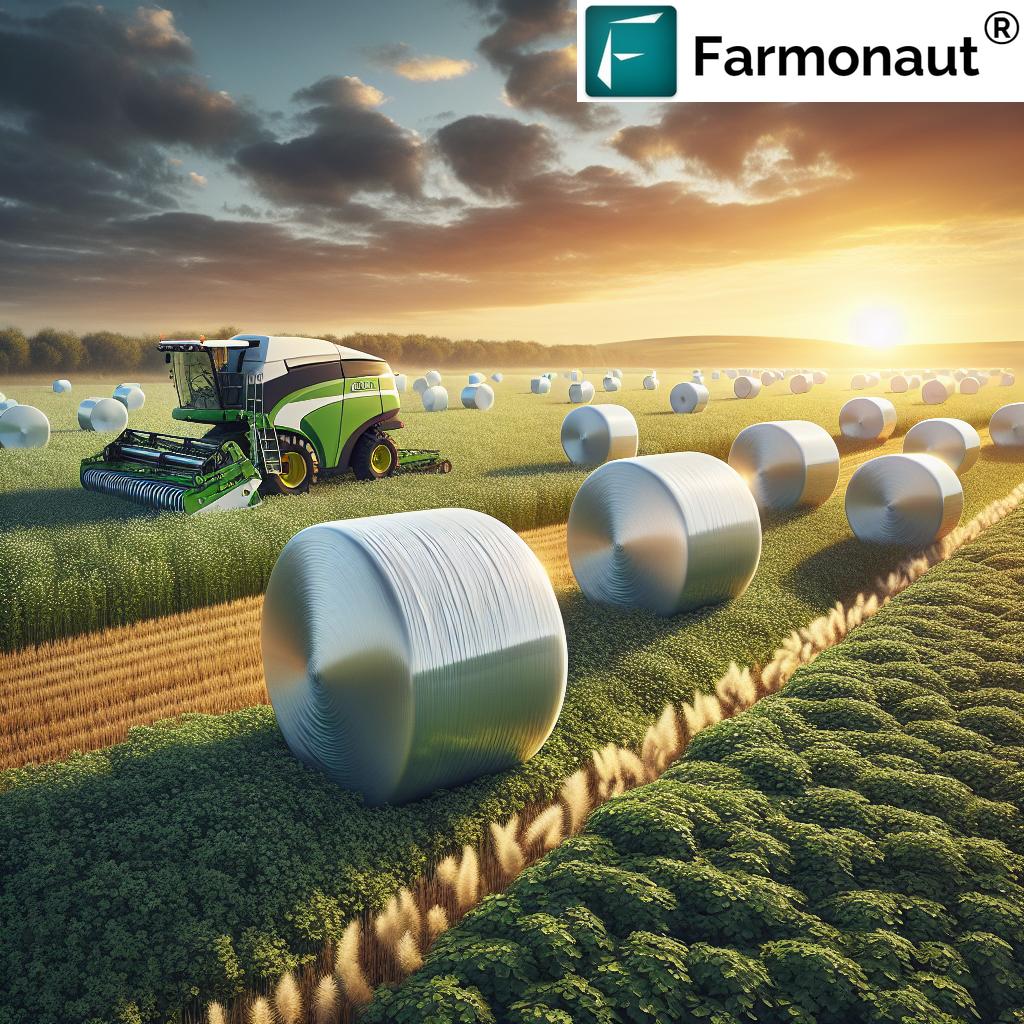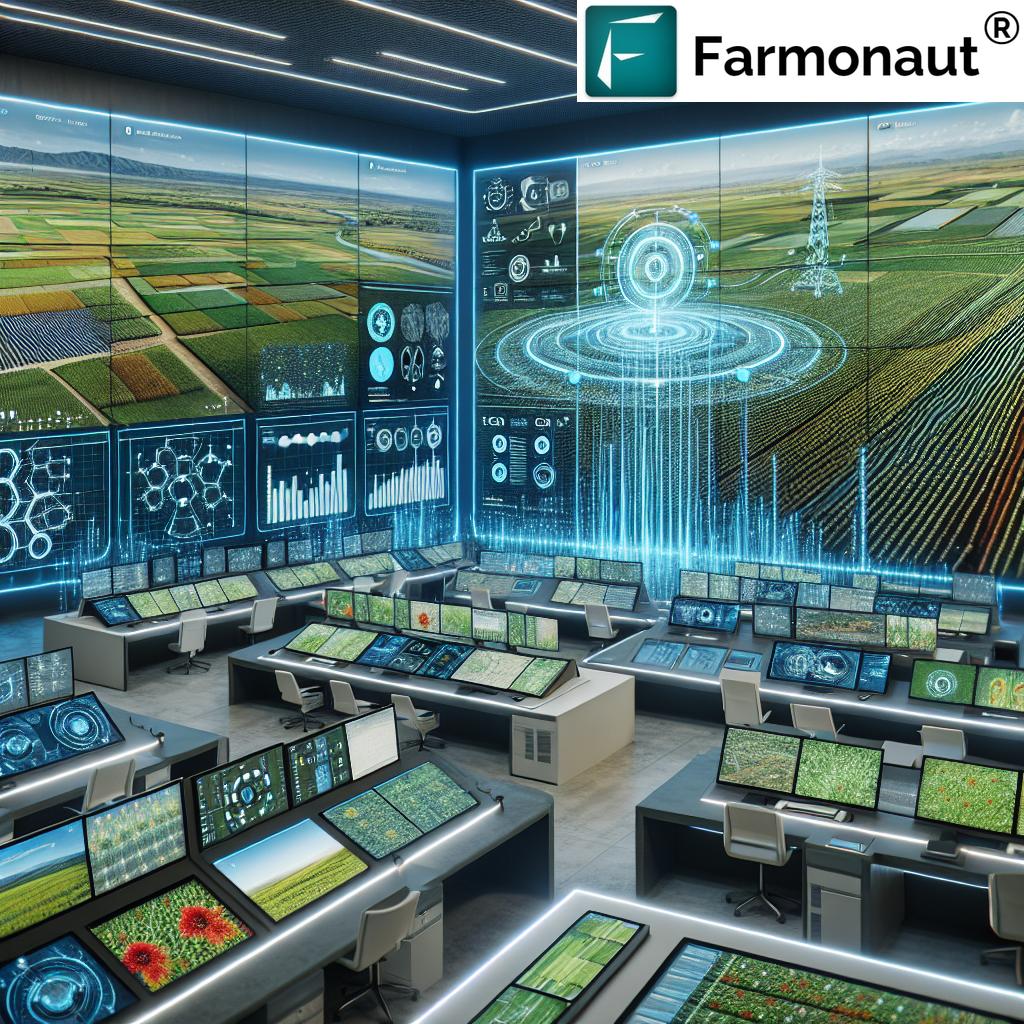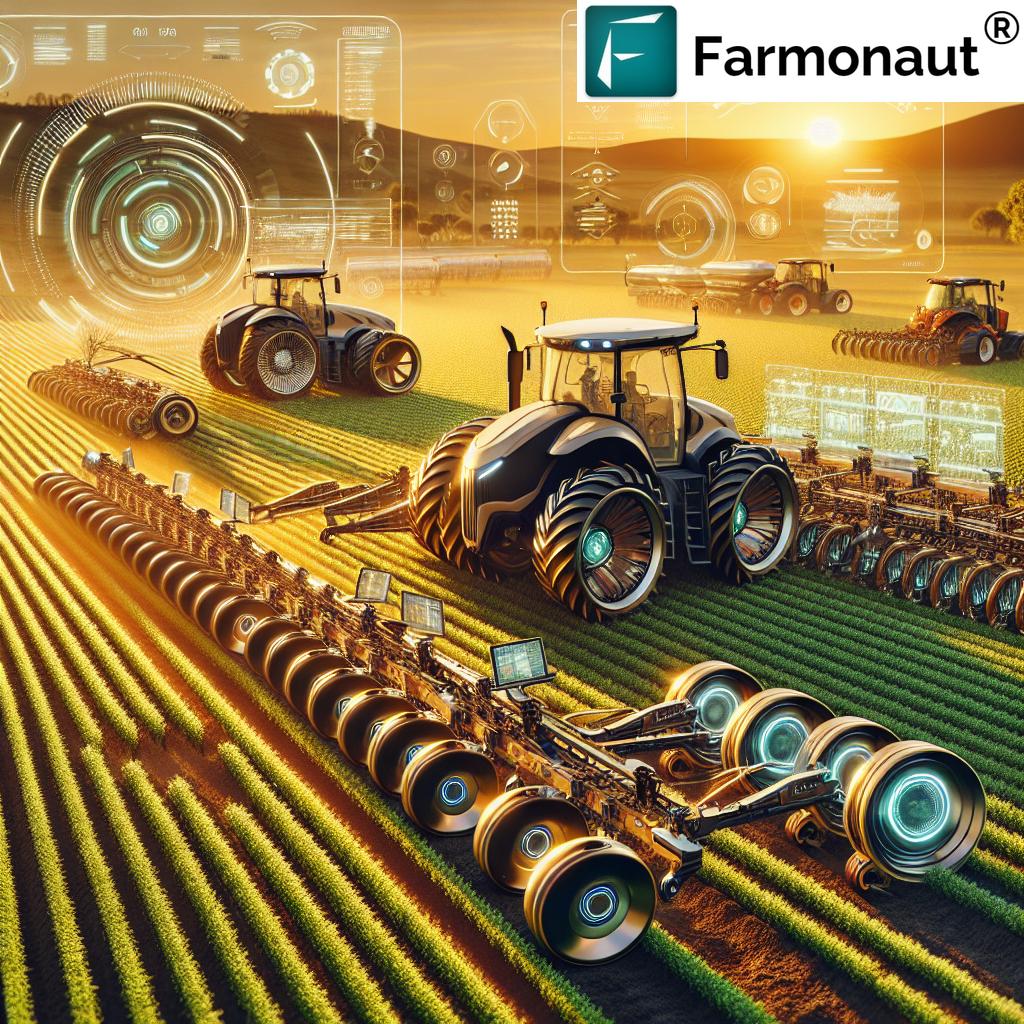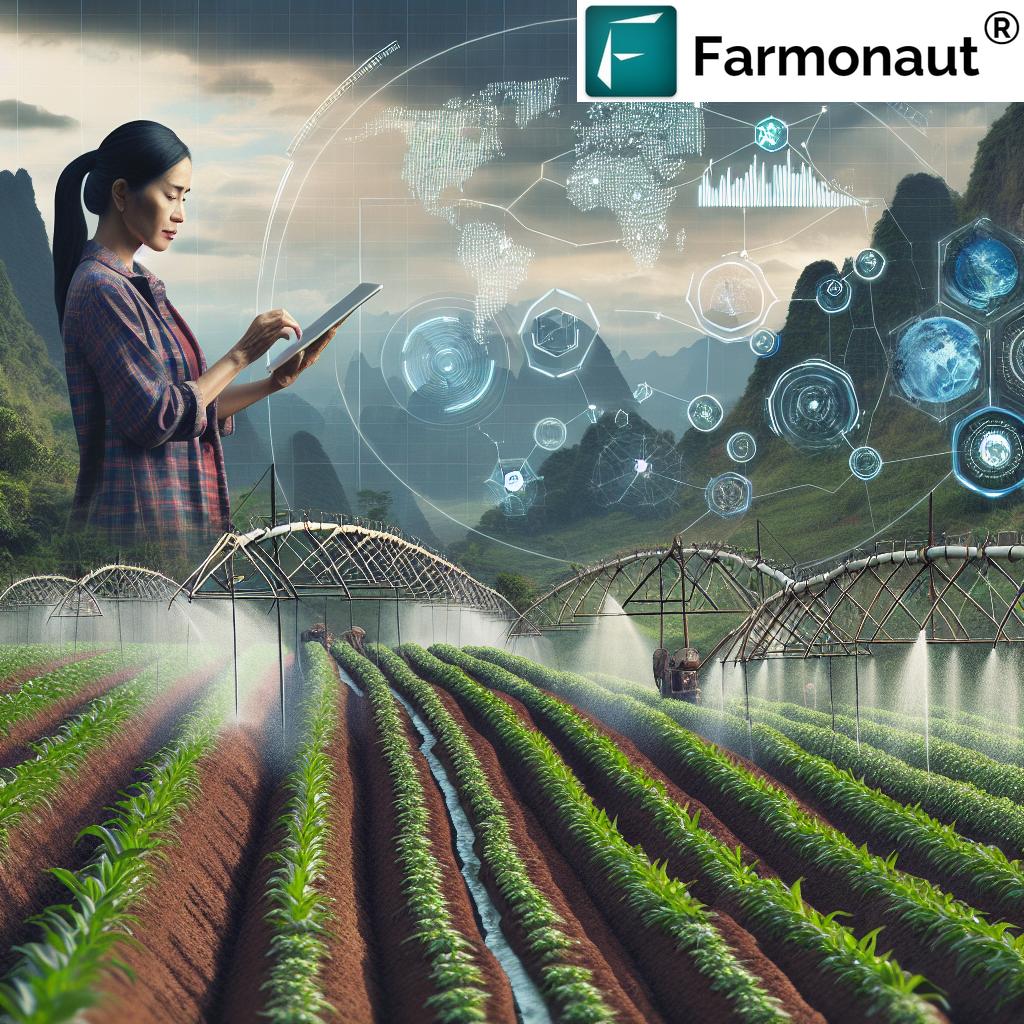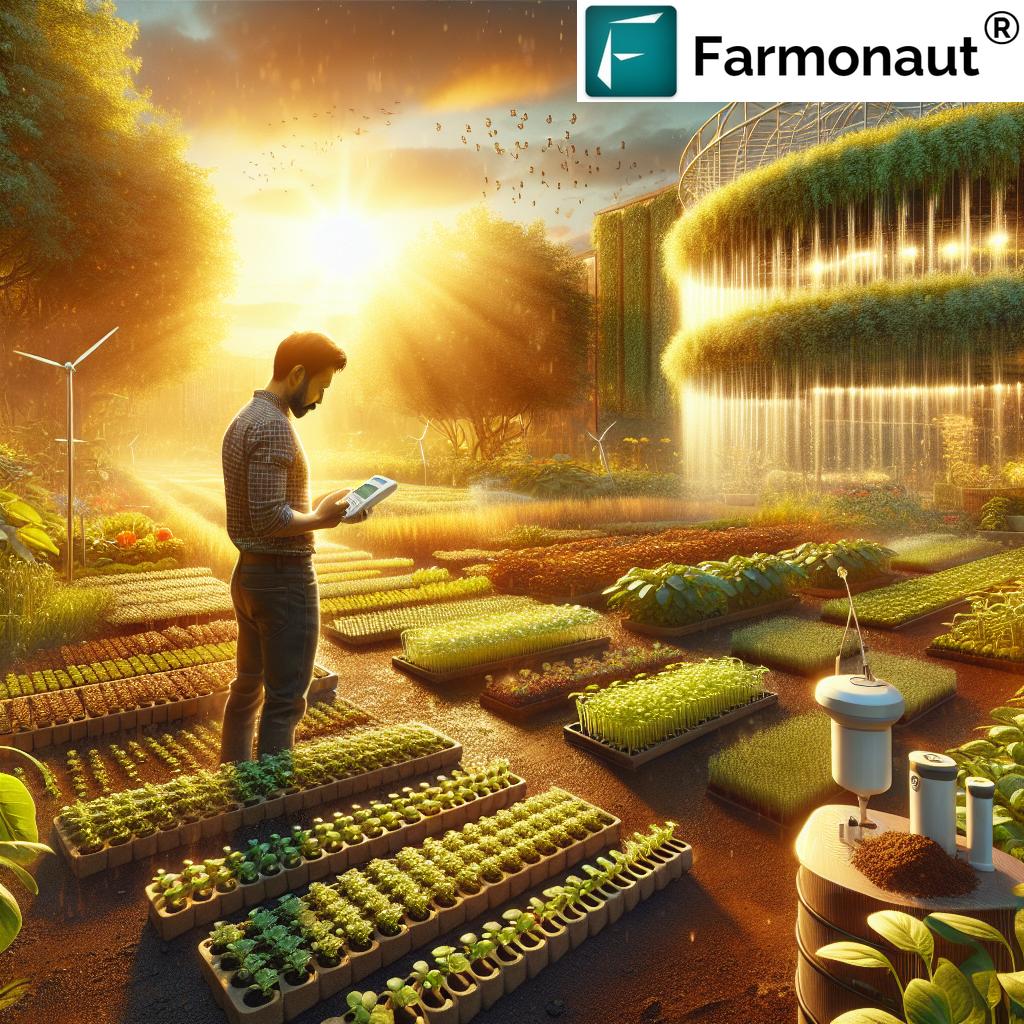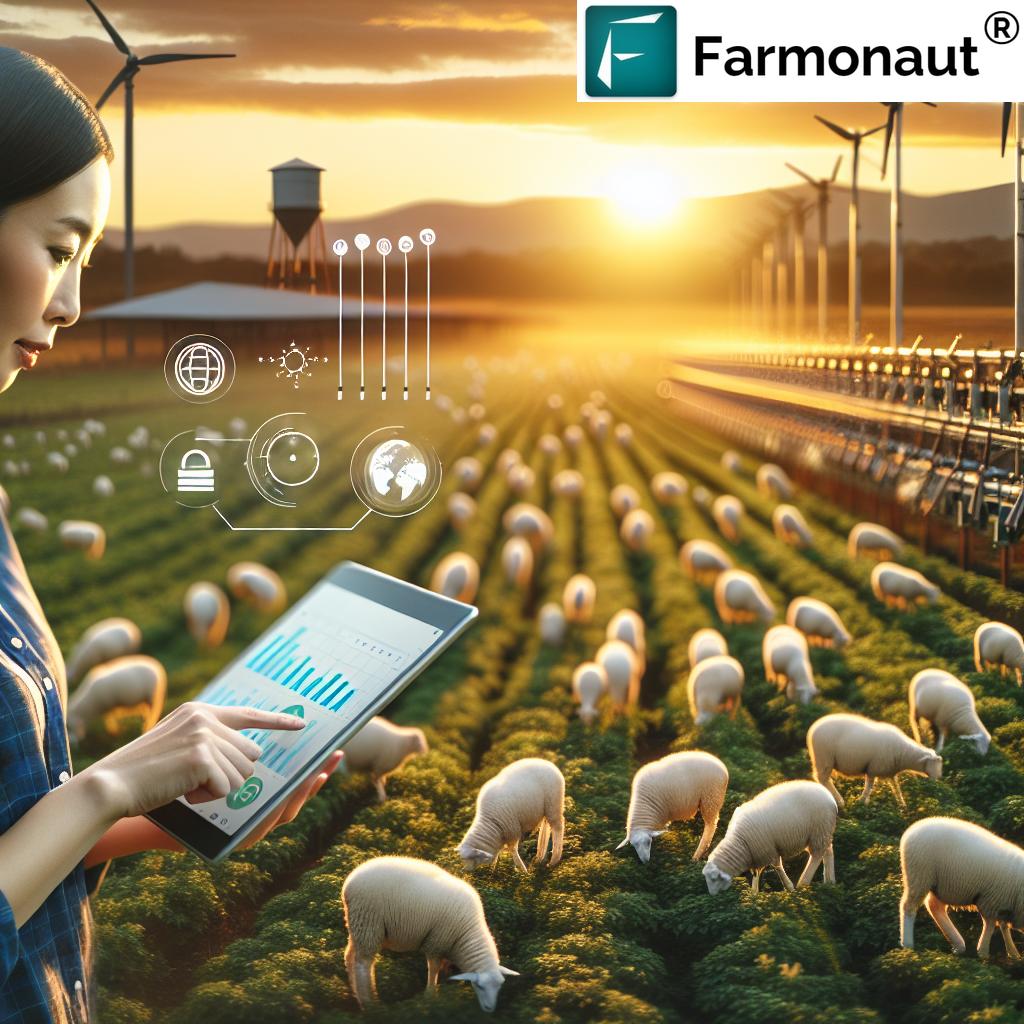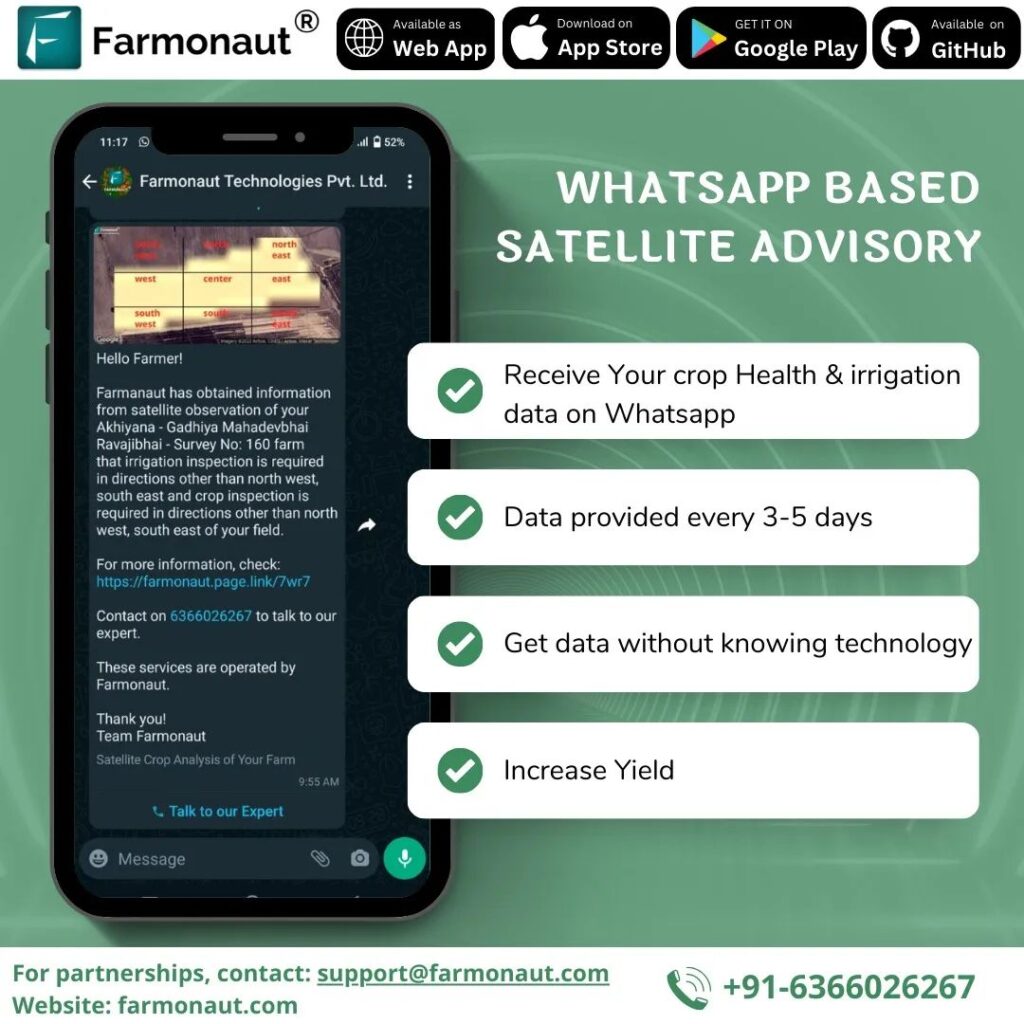How to Adopt Digital Farming Practices: 7 Key Steps
“Over 70% of farmers using precision agriculture report increased crop yields within the first two years of adoption.”
Table of Contents
- Understanding Digital Farming
- Benefits of Digital Farming Practices
- 7 Key Steps to Adopt Digital Farming Practices
- Digital Farming Technologies & Impact Overview (Comparison Table)
- Key Components of Digital Agriculture
- Challenges in Digital Farming Adoption
- Overcoming Challenges & Supporting Successful Digital Farming
- Farmonaut’s Digital Farming Platform: Advanced Tools for Modern Agriculture
- Pricing and Accessibility: Farmonaut Subscriptions
- Frequently Asked Questions (FAQ)
- Conclusion: Shaping the Future of Agriculture with Digital Farming
As the global population grows and environmental concerns intensify, the need for more efficient, productive, and sustainable agricultural practices is greater than ever. Digital farming—integrating advanced technologies, data analytics, and smart agriculture methodologies—offers promising solutions to these challenges. By embracing new digital tools and precision techniques, we can optimize crop yields, reduce resource waste, and enhance sustainability across farms of every scale.
Understanding Digital Farming
Digital farming, also known as smart agriculture or e-agriculture, represents a shift from intuition-based, labor-intensive agriculture to data-driven, technology-enabled farm management. At its core, digital farming involves the collection, storage, analysis, and sharing of electronic data across the entire agricultural value chain—from land preparation and sowing to harvesting and post-harvest management.
What distinguishes digital farming is its holistic approach: it not only incorporates precision agriculture techniques (like GPS-guided input application) but also utilizes a diverse array of advanced technologies. These include IoT devices, drones, satellite imagery, AI, machine learning, and remote sensing. By integrating these cutting-edge solutions, digital farming enables real-time monitoring, intelligent decision support, and scalable solutions for farmers, agribusinesses, and governments worldwide.
Why Is Digital Farming Essential?
- Environmental pressures (e.g., climate change, water scarcity, soil degradation)
- Growing food demand and the need for higher yields
- The necessity to optimize input use (water, fertilizer, pesticides)
- The drive for sustainability and transparency in the food supply chain
Key Concepts in Digital Agriculture
- Precision agriculture: Utilizing technologies (e.g., GPS, sensors, data analytics) to monitor and manage field variability for precise application of inputs and enhanced crop performance.
- IoT in agriculture: Deploying internet-connected sensors and devices to collect, analyze, and share real-time data on critical environmental and crop health parameters.
- Drones for crop monitoring: Employing aerial drones (or UAVs) to assess crop conditions, spot issues like pest infestations, and support informed interventions.
- Satellite imagery in agriculture: Leveraging high-resolution, multispectral images for large-scale, remote crop and soil monitoring—key for identifying trends, variability, and risks not visible from the ground.
- Data analytics and machine learning: Analyzing big datasets for predictive insights, optimization strategies, and automated resource management.
Benefits of Digital Farming Practices
The adoption of digital farming practices unlocks transformative potential for both smallholder and large-scale farmers. By leveraging digital tools for crop yield improvement and sustainable resource management, we can:
- Increase productivity: Using precision techniques and data-driven decisions, crop yields are boosted while maintaining crop health.
- Enhance efficiency: Optimize use of water, fertilizer, and other resources, reducing costs and environmental impact.
- Minimize waste: Precise application means less overuse of resources and inputs, supporting sustainability.
- Enable rapid, informed decisions: Real-time monitoring provides actionable insights for intervention and planning.
- Reduce environmental footprint: Through techniques like carbon footprint tracking, digital farming enables us to minimize emissions and resource wastage—ensuring progress toward sustainable agricultural goals.
- Improve traceability and transparency: Technologies like blockchain offer verifiable records, improving trust and reducing fraud in the supply chain.
- Facilitate access to financing: Satellite-based crop data enhance creditworthiness and insurance accuracy for farmers.
Data-driven farming practices don’t just revolutionize how we manage our fields—they empower us to adapt, thrive, and lead agriculture into a smarter, more sustainable era.
Example of a Use Case:
If you manage several hectares and want to precisely irrigate only when soil moisture is truly low, deploying IoT sensors and satellite monitoring through tools like Farmonaut’s mobile or web app makes this possible—saving water, improving yields, and reducing labor.
7 Key Steps to Adopt Digital Farming Practices
Transitioning from traditional farming methods to a comprehensive digital farming approach requires careful planning, strategic investment, and robust training. Based on our field experience and current industry standards, we recommend the following seven-step adoption roadmap:
-
Assess Current Farm Operations and Identify Digital Opportunities
- Start with a thorough analysis of your farm’s current management practices.
- Identify specific areas where digital technologies (e.g., crop health monitoring, automated irrigation) could deliver the most value and efficiencies.
- Prioritize challenges like resource wastage, yield variability, input costs, and data collection gaps.
-
Set Clear Objectives Aligned with Farm Goals
- Define what you want to achieve: higher yields, cost reductions, sustainability improvements, or enhanced resource use.
- Establish measurable targets and timelines (e.g., “reduce water use by 25% in two seasons”).
-
Invest in Appropriate Digital Farming Technologies
- Choose tools that fit your goals and budget—like satellite imagery, IoT sensors, AI-driven advisory apps, traceability solutions, and drones.
- Consider scalable, modular solutions so technologies can grow with your operations.
- Explore Farmonaut’s platform, offering affordable, powerful farm management tools for all scales.
-
Develop Digital Literacy and Train Staff/Stakeholders
- Conduct regular digital literacy workshops for farm workers, managers, and decision-makers.
- Utilize video tutorials, app-based guides, and expert support for effective tech onboarding.
- Farmonaut’s mobile and web apps offer intuitive interfaces, further easing adoption.
-
Implement Gradually with Pilot Projects
- Begin with a small-scale pilot—such as deploying sensors on select plots or monitoring crop health for a specific field.
- Analyze results, gather feedback, and adapt approaches before scaling up to full operations.
-
Monitor, Evaluate, and Continuously Improve
- Leverage analytics platforms to track progress, identify issues, and make evidence-based adjustments.
- Regular monitoring ensures your digital approach stays aligned with goals.
-
Scale Up and Integrate Advanced Digital Tools
- After a successful pilot, gradually extend digital practices to entire farm or multiple sites.
- Add advanced modules (e.g., carbon footprint tracking for sustainability or blockchain traceability to meet supply chain requirements).
Action Step:
“Digital farming can reduce water usage by up to 30% through advanced data-driven irrigation management systems.”
Digital Farming Technologies & Impact Overview
| Step Number | Digital Farming Technology/Tool | Estimated Crop Yield Improvement (%) | Estimated Resource Saving (%) | Main Benefit |
|---|---|---|---|---|
| 1 | Satellite Imaging & Farm Data Analytics | 12-20% | 5-10% | Identifies inefficiencies, variability, and areas for improvement |
| 2 | AI-Based Advisory Systems | 10-18% | 10-15% | Focuses goals and aligns actions with digital best practices |
| 3 | IoT Sensors, Drones, Precision Application Tools | 8-15% | 15-25% | Enables targeted input application for higher efficiency |
| 4 | Training Platforms, Mobile/Web Apps | 6-10% | 3-5% | Boosts adoption and use of digital tools among stakeholders |
| 5 | Pilot-Scale Field Monitoring Tools | 7-12% | 8-12% | Allows risk-free evaluation before farm-wide scaling |
| 6 | Farm Management Solutions, Data Analytics | 10-20% | 10-20% | Continuous improvement through data-driven feedback loops |
| 7 | Advanced Modules (Traceability, Carbon Tracking) | 5-8% | 5-10% | Maximizes sustainability, transparency, and compliance |
Key Components of Digital Farming
To successfully adopt digital farming, it’s critical to understand the primary technologies underpinning this transformation. Here’s an overview of the most impactful technologies and methodologies used in modern digital agriculture:
Satellite Imagery in Agriculture
- What is it? Multispectral satellite images provide field-scale insights into crop health, soil moisture, and resource status.
- How does it help? Enables us to monitor large areas quickly, identify emerging issues (e.g., pest outbreaks, nutrient deficiencies), and map spatial variability for precision resource application.
- Example Tool: Farmonaut’s satellite-based crop monitoring platform provides NDVI, moisture analysis, and actionable recommendations for all types of farms.
IoT in Agriculture
- Definition: The Internet of Things (IoT) refers to interconnected sensors and devices deployed across fields and farm infrastructure to collect and transmit real-time environmental and crop data.
- Typical Applications: Measuring soil moisture, temperature, humidity, pH, light—and automating irrigation or pest alerts.
- Benefits: With this data, we can make timely, informed decisions, maximize input efficiency, and reduce manual labor and guesswork.
Drones for Crop Monitoring
- Role: Drones quickly capture aerial imagery across fields—enabling us to detect health issues, pests, or water stress before they become visible from the ground.
- Advantages: Rapid deployment and high-resolution imaging enable targeted interventions and more effective management.
Precision Agriculture Applications
- Combining satellite imagery, IoT, and analytics enables us to apply fertilizer, pesticides, and water exactly where needed—minimizing input costs and maximizing yields.
- Field variability mapping supports the development of site-specific management strategies.
Farm Management Solutions
- Platforms like Farmonaut’s Apps provide dashboards for real-time monitoring, historical data analysis, and decision support—helping you manage everything from crop health to irrigation scheduling and risk alerts.
Data Analytics & AI-Driven Recommendations
- Machine learning algorithms analyze vast datasets (satellite, IoT, weather, financial) to forecast outcomes, optimize resource allocation, and recommend best management practices.
- Jeevn AI Advisory (from Farmonaut) is an example of a platform blending field data with AI for customized, real-time crop advice.
Blockchain Traceability
- By integrating blockchain-based traceability (learn more), we can provide consumers, businesses, and regulators with verifiable, tamper-proof records of a crop’s journey from field to market.
- This is increasingly important for food safety, export compliance, and supply chain transparency.
Fleet, Resource, and Environmental Management
- Use digital tools (e.g., Farmonaut’s fleet management solution, carbon monitoring systems) to optimize machinery use, reduce emissions, and support sustainability targets.
- These tools often include route optimization, resource allocation, and compliance reporting.
Challenges in Digital Farming Adoption
While the benefits of digital farming are clear, adoption may be slowed by several challenges that must be addressed for long-term success:
- High Initial Investment: Advanced digital tools require upfront capital—sometimes making adoption difficult for small or resource-constrained farms.
- Technical Complexity: Integrating new technologies involves a steep learning curve.
- Data Privacy & Security: Concerns about data security, ownership, and sharing can create reluctance to share farm-level information digitally.
- Infrastructure Limitations: In many regions, lack of reliable internet, electricity, or high-tech support can impede rollout.
- Scalability and Ongoing Support: Scaling digital transformation requires continuous upgrades, maintenance, and technical support.
Security & Data Management
- With sensitive data in play, robust cybersecurity and privacy protocols are a must to build trust and protect farm operations.
Example Solutions from Digital Providers:
- APIs and developer solutions (like Farmonaut’s Satellite API and Developer Docs) allow seamless integration and secure, scalable deployment.
Overcoming Challenges & Supporting Successful Digital Farming
To ensure successful digital farming implementation, we must adopt strategies that address barriers and promote sustainability.
How to Overcome Common Barriers
- Financial Support: Explore government subsidies, grants, and flexible subscription models to mitigate initial cost barriers to technology adoption.
- Education & Capacity Building: Regular training workshops, online tutorials, and peer learning improve stakeholder engagement and digital literacy.
- Policy Advocacy: Working with policymakers can lead to supportive regulations and improved rural infrastructure.
- Community Engagement: Participating in cooperatives helps share knowledge, resources, and collective support.
- Choosing Scalable, Modular Technologies: Use platforms (like Farmonaut) that offer affordable, scalable digital solutions.
For instance, Farmonaut’s digital farming platform is available as a subscription-based service, compatible with Android, iOS, and Web. This scalable approach ensures access to advanced solutions for farms of any size.
Farmonaut for Crop Loan and Insurance
Besides monitoring and analytics, Farmonaut’s crop loan and insurance verification tools use real-time satellite data for accurate, fraud-resistant farm verification. This enables better access to credit and insurance for farmers, while reducing risk for lenders.
Farmonaut’s Digital Farming Platform: Advanced Tools for Modern Agriculture
As a pioneering agricultural technology company, Farmonaut leverages satellite imagery, artificial intelligence, machine learning, blockchain, and robust analytics to make precision agriculture accessible, affordable, and scalable.
- Satellite-Based Crop Health Monitoring: Access NDVI, soil moisture, and risk maps to monitor crop growth and make intelligent input decisions—leading to increased yields and resource savings.
- Jeevn AI Advisory System: Obtain real-time, AI-driven crop management advice; get weather forecasts, expert recommendations, and strategic actions tailored to your location and crops.
- Blockchain Traceability: Ensure product authenticity and build supply chain trust with blockchain traceability modules.
- Fleet Management Tools: Optimize logistics, reduce equipment downtime, and increase ROI with Farmonaut’s fleet management solution.
- Carbon Footprinting: Track and minimize your farm’s environmental impact by integrating carbon monitoring tools into daily practice.
Available as: Mobile apps (Android, iOS), web dashboards, and APIs for custom integration.
Large Scale Farm Management: Streamline multi-farm, plantation, or forestry advisory with dedicated enterprise modules—making it easier for agribusinesses and government programs to deploy digital agriculture at scale.
Pricing and Accessibility: Farmonaut Subscriptions
- Flexible pricing tiers for individual farms, cooperatives, agribusinesses, and government projects.
- Subscription plans based on hectares monitored and frequency of satellite data updates.
- Fast, secure access via web, mobile, or integrated API solutions.
- Access Farmonaut’s API and Developer Docs to build custom analytics or monitoring dashboards.
Frequently Asked Questions (FAQ)
-
What is digital farming?
Digital farming integrates advanced technologies (satellite imagery, IoT, data analytics, AI, blockchain) into farm management to enhance productivity, efficiency, sustainability, and transparency.
-
How does satellite imagery improve crop yields?
By providing real-time data on crop health, moisture, and field variability, satellite imagery enables precise input applications (water, fertilizer, pesticides)—directly optimizing yields and resource use.
-
Are these technologies suitable for smallholders or just large-scale enterprises?
Thanks to affordable subscription models and modular platforms like Farmonaut, digital agriculture is accessible and beneficial for farms of any size.
-
How safe is my farm’s data?
Top providers utilize robust cybersecurity measures and strict privacy policies to protect user data, as well as giving users control over how their information is used or shared.
-
Which is the best starting point to adopt digital farming?
Start by assessing existing operations, identifying goals, and selecting an intuitive platform (such as the Farmonaut app or web tool) to begin monitoring and optimizing selected plots.
-
Can I connect my IoT sensors or integrate my own data systems?
Farmonaut supports API integrations for IoT sensors, weather hardware, and third-party software for seamless data sharing and platform expansion.
-
How can I access crop loan and insurance support linked to farm data?
Using Farmonaut’s digital verification modules, you can generate verifiable reports to present to lenders or insurers, streamlining approvals and reducing fraud.
-
What makes Farmonaut’s approach unique?
Farmonaut combines satellite monitoring, AI-driven insights, blockchain traceability, fleet management, and carbon tracking—providing a comprehensive all-in-one solution for modern, sustainable farming.
Conclusion: Shaping the Future of Agriculture with Digital Farming
The transition from traditional farming to digital agriculture is accelerating across the globe. By embracing precision agriculture, IoT in agriculture, drones for crop monitoring, satellite imagery, blockchain, and data-driven farm management solutions, we are empowered to revolutionize our agriculture—boosting productivity, cutting costs, reducing environmental impact, and building transparency.
While digital agriculture presents challenges—such as investment, digital literacy, and infrastructure—solutions like Farmonaut’s affordable and scalable digital platform are breaking these barriers and making modern digital farming accessible to all.
With focused steps, continuous learning, and access to advanced digital technologies, we can build a more profitable, sustainable, and resilient agricultural future—for our farms, our communities, and the world.
Start your journey today:
Experience the future of smart farming—where every field is data-driven, every decision informed, and sustainability is at the heart of productivity.


